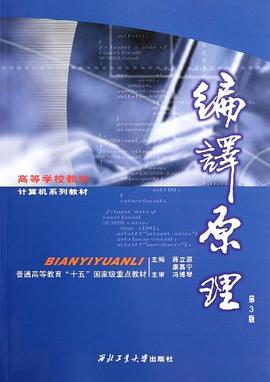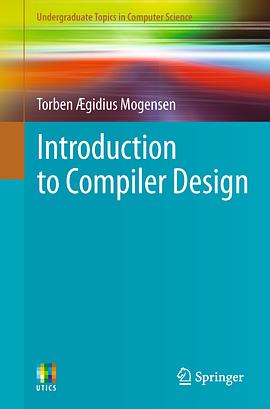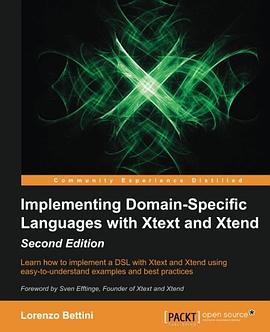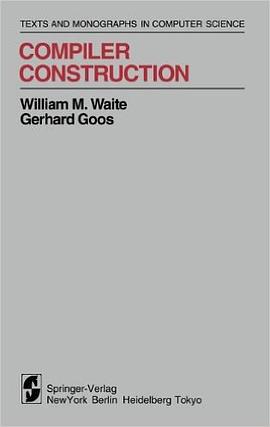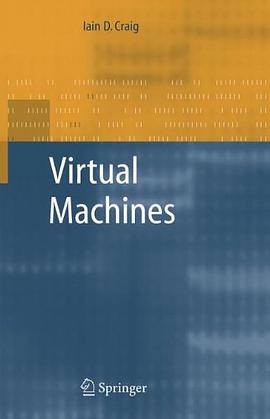
Implementing Programming Languages pdf epub mobi txt 电子书 下载 2025
- 语言
- 编译原理
- 编程
- 程序设计
- programming
- PLT
- compiler
- 编程语言实现
- 编译器
- 解释器
- 语言设计
- 语法分析
- 语义分析
- 代码生成
- 虚拟机
- 语言理论
- 程序设计

具体描述
Implementing a programming language means bridging the gap from the programmer's high-level thinking to the machine's zeros and ones. If this is done in an efficient and reliable way, programmers can concentrate on the actual problems they have to solve, rather than on the details of machines. But understanding the whole chain from languages to machines is still an essential part of the training of any serious programmer. It will result in a more competent programmer, who will moreover be able to develop new languages. A new language is often the best way to solve a problem, and less difficult than it may sound. This book follows a theory-based practical approach, where theoretical models serve as blueprint for actual coding. The reader is guided to build compilers and interpreters in a well-understood and scalable way. The solutions are moreover portable to different implementation languages. Much of the actual code is automatically generated from a grammar of the language, by using the BNF Converter tool. The rest can be written in Haskell or Java, for which the book gives detailed guidance, but with some adaptation also in C, C++, C#, or OCaml, which are supported by the BNF Converter. The main focus of the book is on standard imperative and functional languages: a subset of C++ and a subset of Haskell are the source languages, and Java Virtual Machine is the main target. Simple Intel x86 native code compilation is shown to complete the chain from language to machine. The last chapter leaves the standard paths and explores the space of language design ranging from minimal Turing-complete languages to human-computer interaction in natural language.
作者简介
Aarne Ranta, http://www.cse.chalmers.se/~aarne/
Markus Forsberg, http://spraakbanken.gu.se/personal/markus/
University of Gothenburg, Sweden
目录信息
1.1 From language to binary
1.2 Levels of languages
1.3 Compilation and interpretation
1.4 Compilation phases
1.5 Compiler errors
1.6 More compiler phases
1.7 Theory and practice
1.8 The scope of the techniques
2 Grammars
2.1 Defining a language
2.2 Using BNFC
2.3 Rules, categories, and trees
2.4 Precedence levels
2.5 Abstract and concrete syntax
2.6 Abstract syntax in Haskell
2.7 Abstract syntax in Java
2.8 List categories
2.9 Specifying the lexer
2.10 Working out a grammar
3 Lexing and Parsing*
3.1 The theory of formal languages
3.2 Regular languages and finite automata
3.3 The compilation of regular expressions
3.4 Properties of regular languages
3.5 Context-free grammars and parsing
3.6 LL(k) parsing
3.7 LR(k) parsing
3.8 Finding and resolving conflicts
3.9 The limits of context-free grammars
4 Type Checking
4.1 The purposes of type checking
4.2 Specifying a type checker
4.3 Type checking and type inference
4.4 Context, environment, and side conditions
4.5 Proofs in a type system
4.6 Overloading and type conversions
4.7 The validity of statements and function definitions
4.8 Declarations and block structures
4.9 Implementing a type checker
4.10 Annotating type checkers
4.11 Type checker in Haskell
4.12 Type checker in Java
5 Interpreters
5.1 Specifying an interpreter
5.2 Side effects
5.3 Statements
5.4 Programs, function definitions, and function calls
5.5 Laziness
5.6 Implementing the interpreter
5.7 Interpreting Java bytecode*
5.8 Objects and memory management*
6 Compiling to machine code
6.1 The semantic gap
6.2 Specifying the code generator
6.3 The compilation environment
6.4 Simple expressions and statements
6.5 Expressions and statements with jumps
6.6 Compositionality
6.7 Function calls and definitions
6.8 Putting together a class file
6.9 Implementing code generation
6.10 Compiling to native code*
6.11 Code optimization*
7 Functional Programming Languages
7.1 Programming paradigms
7.2 Functions as values
7.3 Anonymous functions
7.4 Evaluating expressions
7.5 Call by value vs. call by name
7.6 Implementing an interpreter
7.7 Type checking functional languages*
7.8 Polymorphism*
7.9 Polymorphic type checking with unification*
8 The Language Design Space
8.1 How simple can a language be?
8.2 Pure lambda calculus as a programming language*
8.3 Another Turing-complete language*
8.4 Criteria for a good programming language
8.5 Domain-specific languages
8.6 Embedded languages*
8.7 Case study: BNFC as a domain-specific language
8.8 Using BNFC for implementing languages
8.9 Compiling natural language*
8.10 Case study: a query language*
8.11 Grammatical Framework, GF*
8.12 A GF grammar for queries*
8.13 The answering machine*
8.14 The limits of grammars*
A BNFC Quick Reference
A.1 The BNFC tool
A.2 Overview of LBNF
A.3 Abstract syntax conventions
A.4 Lexer Definitions
A.5 Pragmas
A.6 Macros
A.7 Semantic definitions
A.8 Layout syntax
A.9 The BNF grammar of LBNF
B Some JVM Instructions
C Summary of the Assignments
D Further Reading
· · · · · · (收起)
读后感
评分
评分
评分
评分
用户评价
相关图书
本站所有内容均为互联网搜索引擎提供的公开搜索信息,本站不存储任何数据与内容,任何内容与数据均与本站无关,如有需要请联系相关搜索引擎包括但不限于百度,google,bing,sogou 等
© 2025 book.quotespace.org All Rights Reserved. 小美书屋 版权所有



